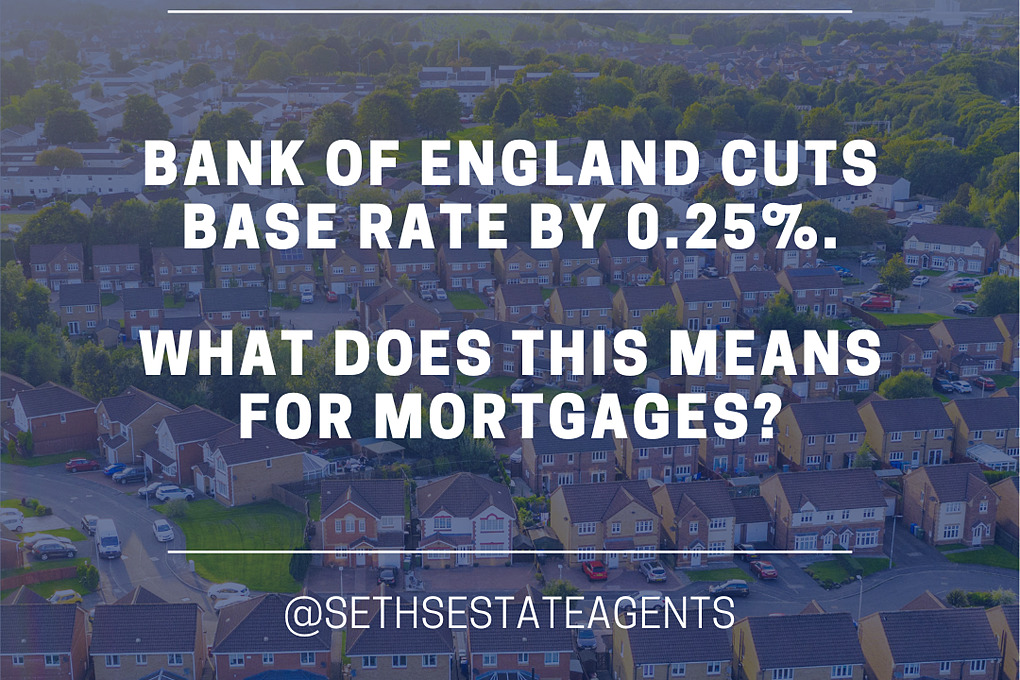Bank of England Cuts Base Rate by 0.25%: What Does This Means for Mortgages?

- Nov 8th 2024
The Bank of England has lowered its base rate to 4.75% following a fall in UK inflation below the Bank’s 2% target for the first time in over three years.
What Has Happened to the Base Rate?
The Bank’s Monetary Policy Committee (MPC) voted 8-1 to reduce the base rate by 0.25%, after holding it steady at 5% in September. Known as the ‘bank rate’ or ‘interest rate,’ the base rate directly influences the rates lenders offer to borrowers.
Richard Donnell, Zoopla’s Director of Research and Insight, remarked, "The reduction to 4.75% is welcome in light of lower wage growth and inflation. This will likely be the last change for 2024, though forecasts from the Office for Budget Responsibility suggest another 0.75% to 1% reduction by the end of 2025, bringing the base rate to around 3.8%."
Why Has the Base Rate Been Reduced?
The Bank of England uses the base rate to control inflation, which peaked at 11.1% in October 2022. In recent years, the rate increased from a low of 0.1% in late 2021 to 5.25% in August 2023 before being lowered to 5% in August 2024.
With inflation now below the Bank’s 2% target for the first time since April 2021, the economic outlook appears more positive. The Consumer Prices Index (CPI) recorded a 1.7% rise for the year ending in September, according to the Office for National Statistics (ONS). Bank of England Governor Andrew Bailey hinted at a more proactive approach to rate cuts, causing markets to predict further reductions.
Looking ahead, Goldman Sachs recently forecast a potential drop to 2.75% by next November, while other forecasts, including those from the IMF, expect a more gradual decline to around 3.5% by late 2025.
What Does This Mean for Mortgages?
The base rate cut is positive news for borrowers. Those with variable-rate mortgages, such as tracker mortgages, are likely to see an immediate reduction. Fixed-rate mortgage holders will feel the impact when they renew their deals, though higher rates compared to previous years may still pose challenges. Around 1.6 million fixed-rate mortgages are due for renewal this year, according to UK Finance.
The mortgage market showed signs of improvement in early autumn, with mortgage deals reaching 6,645 in October, up significantly from 2,258 a year earlier, per Moneyfacts’ UK Mortgage Trends Treasury Report. Fixed mortgage rates also dipped slightly between September and October, with the average two-year fixed rate falling from 5.56% to 5.4% and the five-year fixed rate declining from 5.2% to 5.07%.
Richard Donnell noted, “Most mortgages are on fixed rates. The recent base rate cut is already reflected in lower mortgage rates, which have reached a two-year low this autumn. The average five-year fixed rate at 75% loan-to-value reached 4.1% in September 2024, one percentage point lower than last year.”
However, some major lenders raised rates in October, underscoring the need for borrowers to stay aware of mortgage rate changes. Given the current outlook, mortgage rates are expected to remain around 4% - 4.5% throughout 2025.
How Could This Impact the Housing Market?
The base rate cut could provide a boost to the housing market, as improved mortgage affordability may bolster buyer confidence. With average mortgage rates at their lowest in two years and rising incomes, this year is set to be a strong one for housing transactions, with the highest levels of new sales since pandemic restrictions lifted in 2020. UK house prices are expected to rise by around 2% through 2024.








